Landour Community Hospital
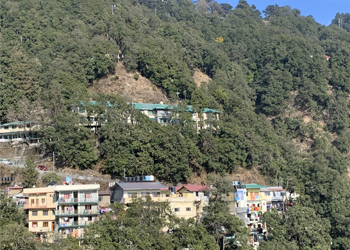
Things are looking up at Landour Community Hospital (LCH). The staff are seeing close to 100 outpatients a day, and inpatient surgeries are up. While they still have a shortage of doctors, they have some new staff coming in, including several US doctors and nurses. It is difficult for American medical personnel to get licensed in India, but these people have had success.
Nestled on a cliff in the foothills of the Himalayas, LCH (long building with the green roof) can be difficult to get to. LCH is about to have roadwork done to widen their access road, which is currently a tight hairpin curve. Recently LCH was able to complete a sorely needed staff housing building, and they also have some new medical equipment ordered. The staff at Landour are encouraged that things are looking up.
A New Lease on Life for Anika
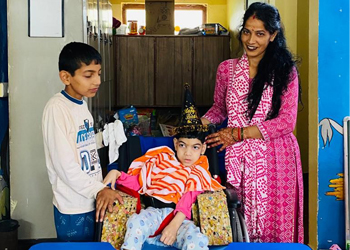

Anika is just 11 years old, but she has lived all of her days struggling with severe cerebral palsy. She is completely dependent upon her mother for eating, bathing, and dressing. When she was six, she became a part of Landour Community Hospital’s Samvedna disability project.
At first, she couldn’t move her neck, making any form of mobility and interaction very difficult. But thanks to the dedicated Samvedna therapists, who come to Anika’s home to give her specialized care, she has made significant progress. Samvedna equipped Anika with a specialized chair for cerebral palsy and a standing frame for exercises.
Now Anika can sit with minimal support and hold her neck steady. She is strong enough to go to the Samvedna facility for therapy and social interaction, providing her mother with a much-needed break from her 24/7 care.
The support from Samvedna staff and the dedication of Anika’s parents have significantly improved her quality of life, allowing her to thrive despite her challenges. This story of progress, care, and inclusion is a testament to the difference that consistent support and love can make in the life of a child like Anika.
Update on Landour Community Hospital
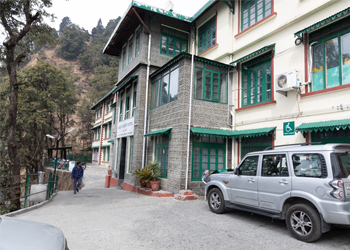

Perched on a mountainside 7,000 feet above sea level in the very tip of North India, Landour Community Hospital (LCH) has been in existence since 1938—that’s 85 years! The city of Mussoorie where LCH is located is a tourist hot spot because of its natural beauty and its cooler temperatures due to the higher elevation. Driveways and roads are quite narrow, making for challenging driving conditions.
On the left you can see the mountainside. LCH is the long building with the green roof. With just 35 beds, it’s not a large hospital, but it boasts a long list of medical specialties. In the last year they have cared for over 22,000 outpatients and 898 inpatients. They see about 230 emergency patients a month.
Their biggest staff need is for an OB/GYN so they can begin delivering babies again. Their greatest infrastructure needs are for improved staff housing, a wider access path, and a new training center.
If you feel led to help meet these needs, please click the button below.
Landour Community Hospital Touches Lives
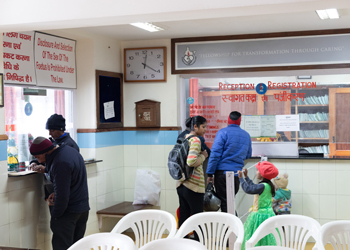
A retired colonel experienced a brain hemorrhage that left him in a coma. He was sent home from the hospital for supportive care. His son, a captain in the air force, lives near Landour Community Hospital (LCH) and was very apprehensive about looking after his father at home. He decided that the best option was to bring his father to LCH.
Over the next three weeks, Landour’s nurses did everything for their patient. They spoke to him, attended to his medical needs, prayed for him, and supported his family. The patient’s wife was able to simply sit with him, knowing he was being cared for with love and excellence. When the colonel eventually succumbed to cardiac failure, his wife and son were grief-stricken but overwhelmed with gratitude for the treatment he had received. They communicated that they had never known this kind of care at other, larger hospitals. The staff at LCH were thankful to touch this family’s lives in ways they hadn’t even realized they were impacting others.
Restored Lives
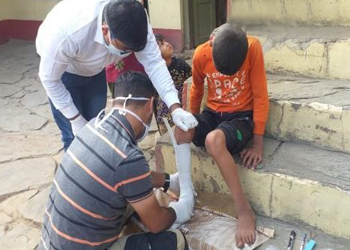
Despite the limitations of operating during a pandemic, Landour Community Hospital was able to hold a prosthetics and orthotics camp for patients in their area. Approximately 20 children and adults were screened and measured for ankle and foot casts, hand splints, prosthetic limbs, and orthotic devices such as walkers, canes, wheelchairs, and cerebral palsy chairs. The life of each individual receiving this kind of help has been transformed forever.
New Life for a Daughter
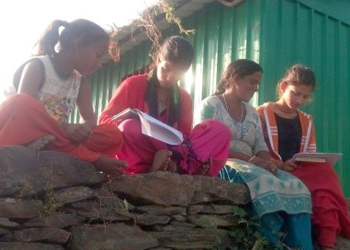
The Parwarish parenting course offered through Landour’s community projects has changed the lives of girls, one family at a time. One daughter shared her story.
“I am Radhika from the village of Tikri. I study in the 8th class and live with my parents, two brothers, and grandmother. In the past, whenever we had any kind of fights among us, every time my brothers’ voices were listened to, but as a daughter I was not listened to. I was neglected and not even allowed to go outside to play, being a girl child.
I want to thank the Garima Project through which the Parwarish parenting course was offered. As a result of both of my parents taking this course, I can see amazing changes and transformation in them. Now my parents choose to listen to me whenever I share with them, and now there is no discrimination between a boy and a girl in our family.
I just want to thank the Parwarish course which has brought about this change in our family.”
Akshay Discovers a Path to Financial Stability

Misconceptions regarding disability are commonplace across India. Akshay, along with his two younger brothers, faced a multitude of social obstacles growing up. As a result, his parents decided to keep them locked in the house as much as possible, isolating and ostracizing them even further. Eventually, the family had to relocate in order to escape the constant harassment they faced in the village.
When the family was introduced to Landour Community Hospital (LCH) staff, they were initially reticent to receive outside assistance. In partnership with other organizations, LCH runs the Disability Inclusive Livelihood Initiatives Program (DILIP). Over the course of several home visits from a therapist and special educators, the family began to accept help and make progress in overcoming the overwhelming social stigma. In time, the family even developed their own sign language in order to overcome the communication barrier that resulted from the boys’ speech disabilities.
At the age of 20, Akshay wanted to begin contributing to the family income. As he became more confident leaving the house alone, his father saved enough money to buy a mule for him. Akshay began making good money transporting a shipment each day for a local business owner. A keen and enthusiastic young man, he began to expand his work, completing a full 10 trips every day. Using the money he had saved from his work, Akshay recently purchased a second mule and is continuing to help his family. This financial stability is comforting for both his younger brothers as well as his parents.
Thanks to the hard work of the EHA staff on the community health team in this village, Akshay and his family were encouraged to take the first steps towards social destigmatization and, ultimately, financial stability.
Father of Disabled Girl Gains Influence
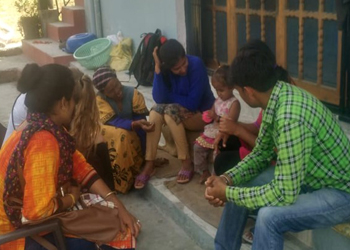
The tenor of the conversation on disability in many surrounding villages is being transformed through the hard work of Landour’s Community Development staff. LCH often works to expand their efforts through partnerships. When successful, advocacy via administrative organizations has incredible results. Finding ways to change the culture, these staff were recently able to have an outsized impact.
In the nearby community of Jaunpur, a little girl with a disability, Ramshi, was able to attend the local school along with all other students. Through conversations with teachers at the school, it became clear that disability awareness and advocacy was important at the institution. The school principal was acquainted with Ramshi’s father, Deepak, and made the decision to invite him to sit on the School Management Committee.
Having a daughter with a disability helped Deepak to become aware of students with even greater needs. A thoughtful and kind man, his contributions to the committee have already resulted in revisions to school policies. Thanks to the networking of EHA staff, Deepak has been able to take an expanded role in supporting his little girl’s education and advocating for the needs of all disabled children in the community.
The Treasure of Triplets

Mansi initially came to Landour Community Hospital for treatment of infertility. After some testing, the doctors recommended some lifestyle changes and sent her on her way. Soon, Mansi was delighted to discover that she was pregnant, but she and her husband were unprepared for the news that she was having triplets!
The team at Landour walked with her all the way through this unusual pregnancy, alleviating her concerns and answering her questions. Dr. Roopa, several nurses, and the chaplain sat with Mansi and her husband numerous times for counseling and prayer.
Mansi made it all the way to 37 weeks and then was ready to deliver. After an uneventful Caesarean section, she and her husband were blessed with three beautiful daughters, weighing between 2.5 and 3 pounds apiece. The babies were treated in Landour’s NICU for about two weeks and then sent home with instructions and prayers. The girls were brought back in at one year of age, and all were happy and healthy.
The Landour team is thankful for God’s mercies on this little family and glad to have been a blessing in a much-needed way.
Landour’s Partner Helps with Rehabilitation

While felling a tree, Mahaveer Singh injured his spine and was left paralyzed from the waist down. Surgery for his fractured spine was recommended, and his family took him to first one hospital and then another for second and third opinions.
Eventually, they brought Mahaveer to EHA’s Landour Community Hospital and he was treated by Dr. George Clarence. Following surgery, Mahaveer underwent rehabilitation at Landour and was successfully discharged.
But Mahaveer still needed physical therapy and couldn’t afford it. He and his wife had five children to support and they had just lost the income from their main wage earner. This health catastrophe brought not only new challenges for their family, but new roles as well.
Landour had developed a relationship with the local Woodstock School, which ran several developmental projects including one that helped to cover the medical and rehabilitation costs for people like Mahaveer. He was thankful for the opportunity to continue his therapy and care, and the school’s students were able to learn about rehabilitation following spine surgery and the social and economic challenges faced by patients like Mahaveer.
This partnership became a blessing to not only Mahaveer and his family, but also the students as it broadened their awareness of various aspects of health care in their region.
Careful Treatment Brings Joy
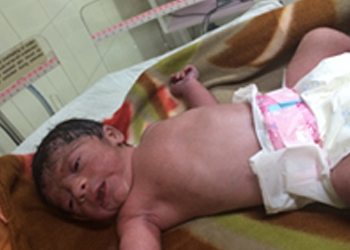
When Meena came to Landour Community Hospital, she was depressed. Over the previous two years, she had seen six or seven doctors who had performed 18 D&Cs (clearing of the uterus’ lining following a miscarriage). The gynecologist at Landour knew this was unheard of as she listened to Meena’s story.
Each time one of these doctors had examined Meena, they told her that her uterus still held the remains of her pregnancy which had not been cleared away by the previous D&C, so she needed another one. When Dr. Jacob examined her, she felt that she should look beyond the usual issues, so she ordered several unusual tests. Meena had to convince her family that these tests were needed and worth the expense and difficulty. The family wanted Meena to go to the government hospital for further treatment because it would be cheaper, but Meena stood her ground, explaining that her time with the hospital chaplain was helping to bring back her lost confidence in herself.
When the doctor got the results back, she found out the cause of Meena’s difficulties—she had a cancerous growth in her uterus. The Landour staff continued to treat Meena’s cancer for almost a year, and they had to explain to her that she would be unlikely to be able to become pregnant again. This was hard news for Meena to bear at only 21. The staff prayed with Meena as she continued to spend time at the hospital even after her treatment was done. They told her that God can do impossible things. He answered her prayers and she delivered a healthy baby boy nine months later. Meena is just one of the many examples of God working in and through EHA staff, showing how He blesses His people with abundance.
Standing Straight and Tall
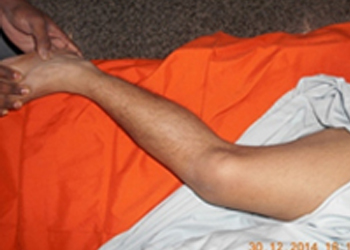

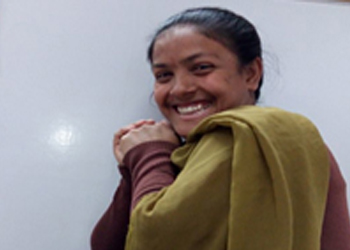
By age 24, she had been bedridden half of her life. Nishi was weary of being a burden to her parents. Her legs were drastically knock-kneed, and she could neither stand nor walk. A visiting orthopedic surgeon at EHA’s Landour Community Hospital evaluated her condition and determined that she was a good candidate for surgery.
Two 15-hour surgeries were performed, and her legs were straightened with bone grafting and plating. Today Nishi is thrilled to be able to stand straight and tall. She can walk freely on her own two legs and is no longer a burden to her parents.
This kind of life change happens every day at EHA hospitals all over North India. All too often, childhood deformities are not dealt with due to ignorance or lack of finances, and these children grow up into handicapped adults who are not self-sufficient. EHA staff are thrilled to make a difference in each life, bringing health and hope for the future.
Flood Relief Brings Hope
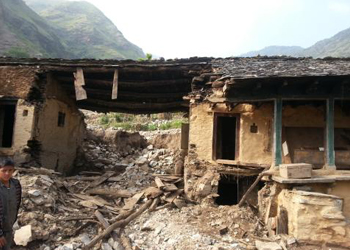
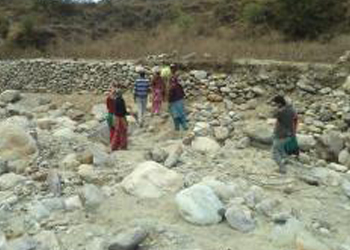

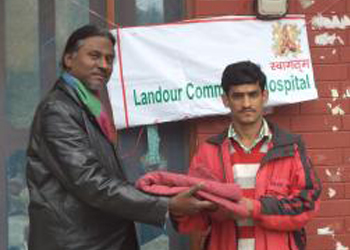
The wall of water hit at four in the morning, bringing chaos and destruction in its wake. The village of 700 nestled in a mountain valley in Uttarkhand was thrown into utter confusion. People ran screaming with their families, trying to reach safety. Thirty-year-old Sajjan Singh Panwar struggled to get his three disabled family members out of harm’s way. His father is missing an arm, his brother is deaf and dumb, and his sister-in-law is unable to walk.
The flood conditions continued for three days, washing away their home, their potato crop, and all of their belongings. The village was a disaster with homes leveled, livestock drowned, roads washed away, and the land covered with large rocks and rubble.
Hope came in the form of EHA’s Community Health and Development team from Landour Community Hospital. Arriving just two days after the flooding began, they brought hygiene kits, sanitary kits, tarps, quilts, soap, clothing, candles, and food. Meeting these immediate needs was considered a godsend by the villagers.
Sajjan’s family received further help from EHA. His brother and father were given goats as a source of income. And Sajjan, a tailor, was gifted with a sewing machine and material since his tailoring shop was completely washed away in the flood. He is now teaching tailoring to five village girls.
The village itself is one of the beneficiaries in the cash-for-work program, which will help them reclaim and reconstruct their agricultural area and gain back what they lost.
Sajjan is now an active volunteer whenever EHA’s team comes to distribute more items. He is also helping to construct temporary shelters and is looking forward to the development of his village into a stronger and more sustainable community.
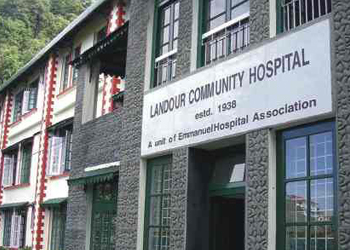
About Landour Community Hospital
In 1938, Landour Community Hospital opened its doors to the deprived village communities living in the mountains of Mussoorie, Dehradun District. These hill people are very poor and live at a subsistence level with both a high infant mortality rate and a high maternal mortality rate. Many suffer from malnutrition and tuberculosis. To address these issues, Landour Community has opened a TB treatment center and also has offered instruction in nutrition, hygiene, heath issues, and baby care.
Today, Landour is a 35-bed hospital with a staff of 70, offering services in the areas of general medicine, surgery, orthopedics, pediatrics, obstetrics, gynecology, physiotherapy, and dentistry. Their newest service offerings include dermatology, ophthalmology, and an asthma clinic. They offer free medical camps to hundreds of patients. Over sixty Village Health and Sanitation Committees have been formed by Landour to serve nearby villages.
The spiritual emphasis is evident at Landour Community through daily morning devotions and ward prayers, weekly youth fellowship, and an annual spiritual retreat. The chaplain recently started a Sunday school for the staff children as well as children from the nearby slums. They learn praise choruses, memorize verses, and hear stories.
The Bhawan Community Health Development Project trains volunteers in how to handle cases of scabies, measles, diarrhea, and pneumonia. They also have awareness programs about HIV/AIDS, TB, and jaundice, teaching villagers how to prevent these diseases. Nutrition education is stressed for mothers and children. The staff are trained in many areas, including disability inclusion, first aid, injury prevention, and eye health. Caring for premature babies and dealing with swine flu are also stressed. School health programs are conducted in the villages to raise health awareness among children. Landour Community Hospital helps this project to conduct 19 peripheral clinics in the villages to help improve villagers’ health.
In serving the poorest of the poor in mountain villages, Landour Community Hospital shows the love of God to those most in need.
